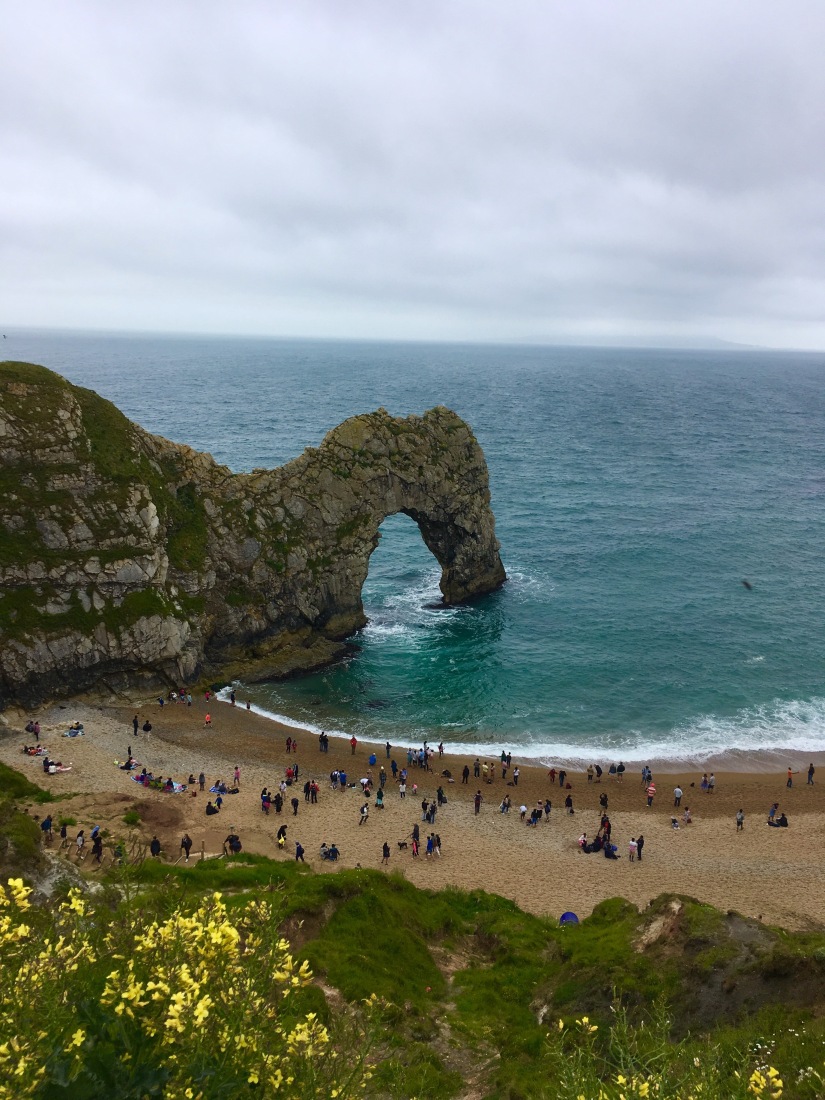Growing up as a Thomas Hardy fan, I have always wanted to explore the rolling countryside of Wessex. Much to my disappointment, Wessex was a figment of Hardy’s imagination and exists only in the pages of his novels. However, not all of Wessex is steeped in imagination and folklore. Once an Anglo-Saxon kingdom, Wessex included all of today’s Hampshire, Dorset, Wiltshire, and Somerset. In one of my travels across England, I planned on visiting parts of ‘Wessex’ and familiarise myself with the culture, literature and history of the region. This time I had chosen Dorset, an English county situated on the southern edges of the United Kingdom.

One of the most interesting features of Dorset, is its long stretch of coastline that highlights Earth’s history from the era of the dinosaurs. As many of you have rightly guessed, the Jurassic coastline is named after the fossils that have been found from the period when dinosaurs roamed the planet. On a fine day in June, I was headed towards Durdle Door, a famous limestone arch located in the Lulworth estate of south Dorset. The train from London Waterloo goes as far as Bournemouth. From Bournemouth, I hopped onto an open bus tour that took its passengers all the way to Durdle Door. The tour bus made its way through the lesser known, yet beautiful Hartland moors.
The Jurassic Coast is a flashback to the ‘Age of Reptiles’ and spans 185 million years of Earth’s geological history. It has survived mass extinctions and lives to tell the tale of our gigantic ancestors. It stretches from Exmouth in the West to Swanage in East Dorset, covering a total length of 96 miles. In 2001, it was declared a World Heritage site and is the only natural World Heritage Site in all of United Kingdom.

Today, it is well known that the Jurassic Coast has evolved over million of years. Its fossilised remains of flora and fauna informs us of the terrain that had once been a desert, a tropical land and a marsh. Lyme Regis, a quaint town, is one of the most popular tourist destinations in the Jurassic Coast. It is famous for its Fossil Festival, pretty beaches and watersports. In the month of May, the place is buzzing with tourists and fossil enthusiasts.

The Durdle Door is one of the most visited stone arches in the world. It is a result of sea erosion- the effect of saltwater piercing through the whitish grey Portland limestone. A geological wonder, it was formed around 10,000 years ago and is often compared to the Grand Canyon of the United States. The name Durdle means ‘thirl’ in archaic English. Loosely translated, it is a bore or a drill. Owing to its immense popularity, the Durdle Door is often a little too crowded and should be strictly avoided at peak hours.

On a lonely and clear evening, the Durdle Door is truly a spectacular sight. Under a sky full of stars and with a head full of dreams, time and space becomes one and inseparable.

Before the road descends to the sandy shores near Durdle Door, a path goes to the left and leads to the scallop shaped Lulworth Cove. Years of wave action and weathering has led to this remarkable geological formation. An Area of Outstanding Natural Beauty (AONB), there is a walking trail that goes amidst pebbled beaches, caves and near vertical cliffs; the walk is suited for all ages and offers stunning views of the surrounding coastline.

Although I was unable to spend more than a day at Dorset, I was amazed by the beauty of the undulating moors and the geological wonders. Arthur Moule, a close friend of Thomas Hardy was right when he wrote:
Shall the tide thus ebb and flow for ever?
and for evermore
Rave the wave and glance the ripple through the
rocks at Durdle Door?



You have been nominated for the Liebster Award!! Check it out!
https://fantasies55215920.wordpress.com/
LikeLiked by 1 person
Thank you so much. ❤️
I am both honoured and flattered.
LikeLiked by 1 person
🙂🙂❤️
LikeLiked by 1 person
Great photos! 🙂
LikeLiked by 1 person
Thank you so much😊.
I’m glad you liked them.
LikeLiked by 1 person
Awesome💐💐💐💐💐
LikeLiked by 1 person
Beautiful place 😊
LikeLiked by 1 person
Thank you 🙂
LikeLiked by 1 person
England has much to offer the visitor. When the weather permits, there is much of beauty to be enjoyed.
LikeLiked by 1 person
Couldn’t agree more. Each county is unique and has much to offer. 🙂
LikeLike
Amazed….
LikeLiked by 1 person
Thank you :). So was I. 🙂
LikeLiked by 1 person
Looks so beautiful, Leah ~ thank you for sharing 🤗🌹
LikeLiked by 1 person
We visited the Jurassic Coastline in April, travelled the whole length over two weeks. The first base was in Dorset and the second in Devon.
LikeLiked by 1 person